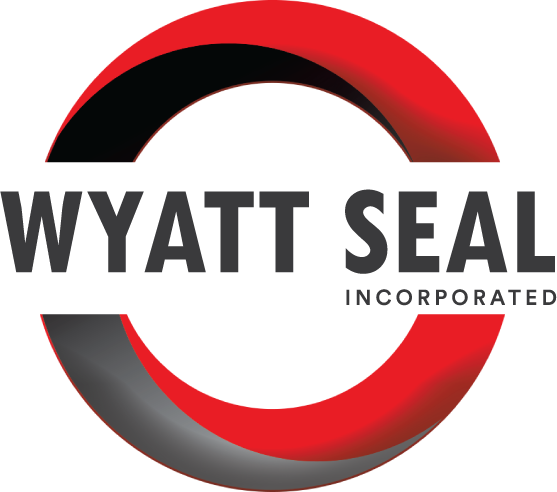When designing fluid containment systems, the comprehension of both face seals and radial seals holds significant importance.
Face seals serve as vital components in preventing fluid leakage by leveraging a sealing gap mechanism, thereby preventing the flow of fluids from regions of high pressure to low pressure. Such a mechanism is crucial for averting operational interruptions and mitigating maintenance challenges.
Radial seals play an equally indispensable role in sealing applications, particularly around rotating shafts. These seals are engineered to prevent fluid leakage along the circumference of the rotating components, safeguarding against potential system malfunctions and enhancing operational reliability.
An adept understanding of both face seals and radial seals is essential for ensuring the efficacy and longevity of industrial machinery and systems.
WHAT IS A FACE SEAL?
A face seal is a mechanical seal configuration characterized by direct contact between two flat surfaces to effectively obstruct fluid passage between the sealing faces through the application of mechanical force and geometric features. This seal is energized in a perpendicular (axial) direction to the sealing faces, exerting pressure to maintain contact and thereby prevent fluid leakage, ensuring containment and system integrity.

Licensing for this image came with permission from the Parker Hannifin Media Manager collection.
DESIGNING A FACE SEAL
When designing a face seal, several critical factors must be considered to ensure optimal performance and reliability:
- The axial squeeze, or the amount of pressure applied to the seal in the axial direction, must be precisely controlled to achieve the desired compression and sealing effectiveness. This axial squeeze is typically achieved through controlled tightening of fasteners or by using specialized sealing equipment.
- The gland fill, or the amount of space available for the seal within its housing, must be carefully calculated to accommodate the seal without excessive compression or deformation. Adequate gland fill ensures proper sealing without overstressing the seal material.
- The interference, or the intentional overlap between the sealing surfaces when the seal is installed, must be carefully determined to create the necessary sealing force while avoiding excessive friction and wear.
Balancing these factors is crucial to designing a face seal that provides reliable fluid containment while minimizing leakage and maximizing longevity in demanding industrial environments.
WHAT IS A RADIAL SEAL?
A radial seal is a mechanical seal configuration characterized by the contact between a circular seal and the outer or inner circumference of a mating surface to effectively obstruct fluid or gas passage. This seal is energized in a radial direction, exerting pressure outward or inward to maintain contact and thereby prevent leakage, ensuring containment and system integrity.

Licensing for this image came with permission from the Parker Hannifin Media Manager collection.
DESIGNING A RADIAL SEAL
When designing a radial seal, several critical factors must be considered to ensure optimal performance and reliability:
- Radial squeeze refers to the amount of pressure applied to the seal in the radial direction and must be precisely controlled to achieve the desired compression and sealing effectiveness. It is typically achieved through the proper sizing of the seal relative to the shaft or bore.
- The gland fill— or space available for the seal within its housing— must be carefully calculated to accommodate the seal without excessive compression or deformation. Adequate gland fill ensures proper sealing without overstressing the seal material.
- The interference is the intentional overlap between the seal and the mating surfaces when the seal is installed and must be carefully determined to create the necessary sealing force while avoiding excessive friction and wear.
Balancing these elements is key to creating a radial seal that offers dependable fluid or gas containment, reduces leakage, and enhances durability in harsh industrial applications.
STATIC VS. DYNAMIC RADIAL SEALS
Static radial seals are used in applications where there is no relative motion between the sealing surfaces. These seals are designed to maintain a tight seal even when the parts they are sealing remain stationary. Static seals are typically easier to design and maintain because they do not have to accommodate movement, which reduces wear and potential for leaks.

Licensing for this image came with permission from the Parker Hannifin Media Manager collection.
Dynamic radial seals, on the other hand, are used in applications where there is relative motion between the sealing surfaces, such as rotating shafts or reciprocating pistons. These seals must be designed to accommodate the movement without losing their sealing capability. They need to withstand friction and wear over time while maintaining their effectiveness, often requiring specialized materials and designs to handle the dynamic conditions.

Licensing for this image came with permission from the Parker Hannifin Media Manager collection.
Understanding the crucial roles of face seals and radial seals in fluid containment is vital for the design and maintenance of industrial systems. By mastering the design principles of both types of seals, engineers can ensure reliable operation, minimize leakage, and enhance the longevity of machinery in demanding environments.
For additional resources and information about face and radial seals, view the Radial Seal Design Guide from our partners at Parker Hannifin. As a Parker Hannifin Seal Technology Center Distributor, Wyatt Seal can connect you with Parker’s industry-leading sealing solutions.
If you need help navigating this process to find the right seal for your project, talk to a seal expert at Wyatt Seal. We’ve spent 50 years building relationships with seal manufacturers worldwide to offer you access to thousands of seals, gaskets, O-rings, and other specialty items for any application.


/IMG_7324_preview.jpeg?width=723&height=482&name=IMG_7324_preview.jpeg)